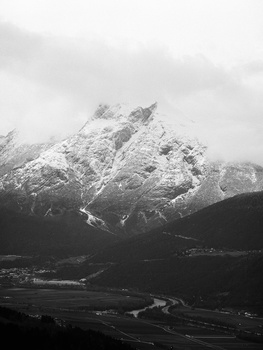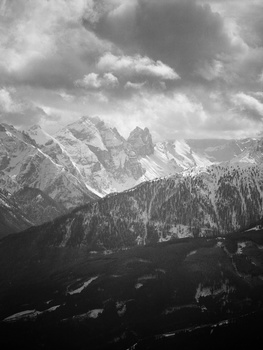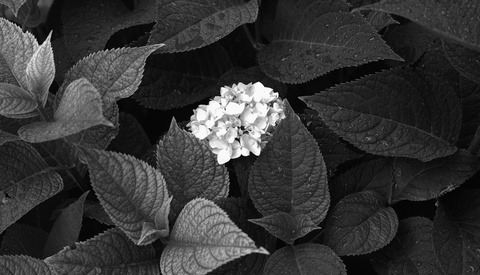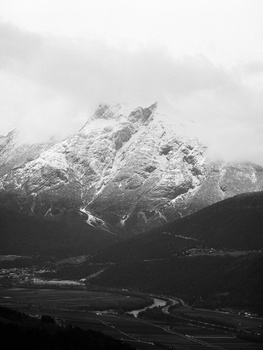Working the Scene from Four Different Perspectives: Protest Photography
Tags: Photography for Beginners, Protest Photography, Civil Unrest
by
Expressions of civil unrest have provided many opportunities for photographers to capture the energetic, emotional scenes which are the byproduct of demonstrations, protests, riots, and other manifestations. Crowds offer such a dynamic set of possibilities that I’ve even heard some describe protests as being “cheating,” or “too easy – fish in a barrel.”
While it’s certainly easier to find something close and interesting to frame it is not easier to produce actually meaningful work by any standard – if it were then every protest would be accompanied by dozens of powerful, iconic documents. Instead, like any other genre, it requires a huge investment of time and care to produce something that can escape the genre – a true artifact.

We live in interesting times, and those times have offered many such opportunities, involving masses of citizens seeking resolution and outlets for their agenda. Over the last few years our documentary co-operative has spent hundreds of hours in these spaces; walking, talking, learning, and photographing, with the intent of producing a record of testimony. We have not looked at straightforward reportage, but rather a closer investigation into the way these protest spaces operate.
Where many find themselves amplifying the agenda contained within their photographs we worked towards a more sociological goal of humanitarian observation. Many photographs within a protest space document the physicality of signs, gestures, or performances, but in our opinion lack nuance. We did our best to identify based on our own values what was worth documenting on a case by case basis, moment to moment – a photographer’s documentary vision, not necessarily a surface level analysis.
Here, we present some of those values, along with some of our decisions in terms of the gear and methodologies we used while documenting protest spaces over recent months.
Andrew Blowers
I am lazy when it comes to equipment. Early in the summer I remember carrying my Leica M4-P, with my Nikon SLR and 200mm over my arm, and realising that one of them just wasn’t making sense to me anymore. M rangefinders are my comfort zone. They work exactly how and when I need them to, no thought required. The SLR and 200mm was necessary for the more “press” approach I was trialing, but did not work in my favour either at a distance or up close.
The size and weight, combined with the way my subjects perceive it and me (in my often dark grey/black outfits) was intimidating, and it offered more trouble than it did benefit in the added reach. The 200mm “look” can often seem a little voyeuristic, even when in crowds, and I would prefer to have as little space both psychologically and physically between myself and my subjects when possible.

Since that moment I’ve been working as light as possible, even
shedding my bag. As a musician I’ve hung heavy instruments around my
shoulder and neck for years, so being able to free myself from any
straps, even light-weight ones, is immensely freeing. Nothing gets in my
way now, and importantly I feel free when I slip through a
crowd, or situations where looking like anything “official” could cause
tension. I remain impartial, able to deflect interrogation from agitated
and angry protesters and police alike. I don’t look like mainstream
media with a small camera and no bag, so all that’s left to manage is my
attitude and their ego.
For any protests that I felt were likely to incur conflict I would pair down further still, one M body and one standard lens, usually 35/50mm, with as much film in my pockets as I could manage. This is pretty much my proven way of working best – absolute minimum, absolute restriction, no worry or frustration or compromises: just shoot, and occasionally run.

50mm will always win out if I’m unsure what to have with me. I’ve shot with it almost exclusively this year – a Zeiss Planar f/2, which seems the best balance of size and performance. I wouldn’t want faster, as I can always push HP5+, and the weight and size quickly makes it a hindrance compared to the payoff of any “look” I’d be achieving. This work isn’t about the look, it’s about the content: I can fit that content into a 50mm frame, and that’s what matters.
For a while I tried working with two bodies, my M4-P with 50mm, and my M3 with a 90, but decided that for regular use this was overkill. I really could do what I needed to on 50mm, I just needed to learn to trust myself and get on with it. In thick crowds a 35mm can be useful, but not essential, so when I carry two M’s now it’ll be with 35 and 50. This also gives me the option to switch between bodies when I find my film exhausted unexpectedly – it’s always best practice to keep an eye on the frame counter, and to use any luls in action to capture some context and still life to finish any rolls which have passed frame 30.

We decided early on as a group that in protest environments it was the most sensible thing to work in pairs. This had a safety aspect, as photographers are often targets for those frustrated with the way they are represented by the mainstream media, but also worked creatively to allow us to support each other’s ideas and perspectives while in the field.
I often worked alongside David, and quickly became accustomed to dodging each other whilst also avoiding projectiles like glass bottles, traffic cones, and even flares and fireworks while working some of the more lively manifestations. As I was shooting a touch longer at 50mm than David was at 28mm I was able to literally watch his back in the melees between protestors and police, whilst also being able to work comfortably without actually having to “work around” each other. Often we would capture the same moment, but with different details noticed, which made for very complimentary results.
The most recent technique I’ve been experimenting with is an off camera flash – almost the classic Gilden setup. This also allows me to engage with my subjects with a bit more energy, encouraging me to move in, grab a single frame, and get out of there. The entire rig on my M4-P is manual, which means control must be incredibly precise. While the classic 28mm Leica shooters have little trouble zone-focusing it took me a little while to adjust to using my 50mm at 2m, stopped down, and still having little depth of field to work with. I needed to approximate the distances required before stepping into place.
The flash is an older model, so the recycle time is quite a while. This encourages me to commit to a shot then follow through – no messing around. One of my favourite successes of this method can be found on page 44 of our debut zine, BARDO: Summer of ‘20, but this one here shows a good technical application.

Approaching the winter I’m hoping to take this method further, so that I can work in this style when appropriate, weave it into other projects, and hopefully offer a distinct aesthetic in the end results.
David Babaian
A couple of years ago I was photographing at Notting Hill Carnival with Simon, when a police line forced the sprawling masses to funnel into a tightly packed street. Much like a crowd at a music festival trying to get up close to their heroes, everybody continued pushing harder and harder to get to the front.
Waves of people kept rolling in, and I found myself in a position I needed to get out of – pinned up against a metal fence without an inch to move, whilst the swells of people kept on pushing. I hated it.
I wasn’t used to this sort of situation. Panic set in, and self-preservation immediately became the name of the game. After shoving and squeezing, Simon and I eventually managed to get out of the main crowd and into a car park. This was the moment that I knew I had failed. A week or so later, with negatives scanned, I had my confirmation: not a single noteworthy image.
This was perhaps my biggest lesson in photography so far. I was deeply embarrassed about the way I had handled the situation, and more to the point, I was massively disappointed with myself and the images that I had produced (or the lack thereof).
My priority had been comfort and a perceived threat, which once dealt with now seems petty. I had to do better. I realised that I’d thrown away an opportunity to document an historic event, and if I was going to go forward and make images that are truly important rather than vapid “man walks through light” street style pictures, I had to embrace the chaos: I had to learn to love the unexpected nature of crowd movement and be at home in those waves.

So I studied. I looked to the great visual storytellers, and learned how to use mayhem to form an image in layers. I realised that a single frame didn’t need to exclusively tell one single story, but rather could represent a myriad of converging life experiences and their interactions with each other. I ditched the 50mm lens that had been practically welded to my camera in favour of a little 28mm and I vowed not to shy away or distance myself again. Humanity is up close and personal.

Ironically, despite the Government programming and social mantra of 2020 being to “keep apart,” I found myself in situations where I had never been closer. I spent the summer documenting from the thick of dense crowds of protestors, documenting social transitions with my colleagues of NEG.
In my experience the vast majority of these protests have been both peaceful and specifically non-violent; with almost no exceptions the police seem to have done an outstanding job of inspiring chaos, turbulence and disorder.

At almost every protest, the heavy-handed nature of the policing has meant that the biggest threat to me has actually come from the authorities rather than from any rowdy rioters. We have had to become acutely aware of police movements and tactics during demonstrations in order to stay safe, so working in pairs as a minimum has proven invaluable: our body of work is very much a team effort rather than that of any individual.
Crowds can be daunting things, and while it’s said that the easiest place to hide is in a crowd, this certainly isn’t true if you have a camera… so don’t try. We live in a world where a camera is often initially perceived as a weapon – “Why are you taking that photo? Who are you selling it to?” – so being comfortable in these situations is paramount.
Body language is communicated instantly with all those around, so confidence (not misplaced ego) and empathy are crucial. Looking back on that day at Notting Hill, I wonder how I may have seen things differently if I had embraced the chaos rather than shying away from it.
Sagar Kharecha
I actually only shot my first roll of film in January 2020, and spent the rest of the year embracing all that analog has to offer. I’ve been consciously disconnecting from an autofocus, auto-exposure, continuous-high, scatter-gun approach. Throughout 2020, protests have presented ideal environments to exercise critical thinking, and naturalise full manual control whilst operating in dynamic, volatile situations.
One example burnt into my memory was during 13th June – an event soon dubbed as the ‘Battle of Trafalgar’. We knew the significance of that day prior to arriving, so I had brought an F2 with 28-200mm & Minolta with 50mm. Without previous training or shock exposure I was quickly overwhelmed with panic and too much choice during critical moments, resulting in hesitation and underwhelming frames. On that day I was paired with Simon – still recovering from a leg injury, and we stayed at the outskirts, cautious not to get involved in the thick of the action. Despite our cautious approach we found ourselves unexpectedly caught in the middle of a clash between the two factions of the day by St. Martin’s Church, narrowly escaping violence by essentially hiding in a corner and timing our escape once the majority of instigators had passed us by.

In this kind of environment we would always work in pairs in the field, but also as a team to coordinate and share open-source, human intelligence before, during, and after events. We assess risk, debate contingency plans, and make informed decisions when entering volatile spaces.
My current setup is now comparatively refined and consists of HP5 PLUS (often pushed), Nikon F2 & 50mm f/1.8, and more recently a 24mm f/2.8, to avoid complacency and start learning a more socially involved focal length. The 24mm requires me to be inside scenes I could usually approach from within a few steps with a 50mm.

Sharing the same format with the others helps when it comes to troubleshooting problems on the fly. Although Andrew, David, and Simon are primarily rangefinder photographers they have good technical knowledge with resolving mechanical issues, and a deep film understanding which means advice on exposure and application. Film could be shared although we all know to carry spare rolls and batteries, even when we don’t expect to use them.
On one occasion David and Andrew identified an opening by King Charles St. during a clash between police and protestors, and while the police were occupied coordinating resources, we walked confidently towards the flashpoint by the War Room arches unhindered.

Taking advantage of a usually restricted, and therefore extraordinary environment, it was important to produce good work without provoking unwanted attention from either side.
Diving in-and-out close to the line made for intense imagery and training. News had reached that police were anticipating a surge, just then a banana peel was thrown at me – luckily nothing more damaging followed. A black female TSG officer was removed from the flashpoint, singled-out by protestors as a “race traitor”. She broke down crying, guarded by fellow officers warding away photographers from the scene. I couldn’t get the shot out of an informed fear of reprisal.
Beyond violence, cardboard or megaphones; protest photography manifested into the question of how best to maintain and improve clarity of thought. In the pursuit of powerful imagery, film gave me the limitations I needed to break my photographic crutches.
Simon King
During a protest in early June I took a glass bottle to the leg – luckily nothing serious – which for a while affected my ability to work in the heat of any action. I adapted to this by adopting a longer-lens approach, and working my way around the outskirts of the activity. My results were not exciting, as I was drawn towards more details and context, but definitely valuable transitional work to fit into projects.
As photogenic as some of the more explosive moments of action can be at this sort of thing, I do prefer a calmer, more clinical approach to working: until those moments arise I can still be productive in working towards a larger project.
Working the periphery often gives me subjects who are in some way “outside” if only in that mental state of being there without being in the midst of a rolling, roaring mass. Characters, details in discarded detritus, and the ability to keep my eyes on possible issues or situations arriving make the outskirts a great place to work.

For this approach I used my SLRs, which give a longer reach than my rangefinders – I have a Nikon 70-300mm which was only about £40, but has produced some of my favourite photographs to date! It’s a cheap and versatile lens, but does require the use of faster speed films, so either a 3200 option, or pushed 400 @ 1600 are valuable carries.

Later on in the summer, with a fully healed leg, I decided to spend more time with a 35mm, and to work on producing layered compositions. For this approach I spend a lot less time actively seeking out small points of interest, and instead wait until there’s some kind of rapidly shifting situation. I look for the potential to incorporate something useful in the foreground, midground, and background.

My rangefinder M’s are perfect for this approach, and the 35mm and 50mm lenses are almost designed for these kinds of images. Classic documentary work is the angle here, and a very different end result compared with what I produce on my Nikon with a 300mm.
While in crowds I am looking at faces, then at body language, in order to read a scene from the way someone is presenting themselves in that space. I avoid machismo and posturing, and prefer a more intimate, tender expression. Two people or more are much more preferable to one alone, as a vista featuring a group dynamic has a lot more interest than one character at a time, unless they’re especially standout.

Onlookers, or those affected by protests which block roads or perform other acts of civil disobedience make for great subjects. There is always a mix of curiosity and frustration as their day is interrupted.
I don’t think there’s much difference between what I search for in these situations and what I look for while out shooting general street photography work. The potential for strong narrative driven by humanity is at the heart of my work, and thematic differentiation isn’t really evident in a tangible way. I like these photographs because they fit next to pretty much any of my others – and can be woven into many of my projects. Share this article.
----------------------------------------------------------------------------------------------------------------------------
PHOTOGRAPHY FREEBIE:
How to make money with your Photography even if you're not a Pro.
Copy & paste this link into your browser, click ENTER, and enjoy:
https://mrdarrylt.blogspot.com/2020/01/how-to-make-500-month-from-your.html-----------------------------------------------------------------------------------------------------------------------------
Visit me on Facebook and post your pictures.
https://www.facebook.com/Darryl-T-363867387724297/






.jpg?resize=600%2C450&ssl=1)
.jpg?resize=600%2C600&ssl=1)
.jpg?resize=600%2C450&ssl=1)
.jpg?resize=600%2C450&ssl=1)
.jpg?resize=600%2C450&ssl=1)
.jpg?resize=600%2C450&ssl=1)
.jpg?resize=600%2C450&ssl=1)
.jpg?resize=600%2C450&ssl=1)
.jpg?resize=600%2C450&ssl=1)
.jpg?resize=600%2C450&ssl=1)
.jpg?resize=600%2C480&ssl=1)
.jpg?resize=600%2C600&ssl=1)
.jpg?resize=600%2C450&ssl=1)
















